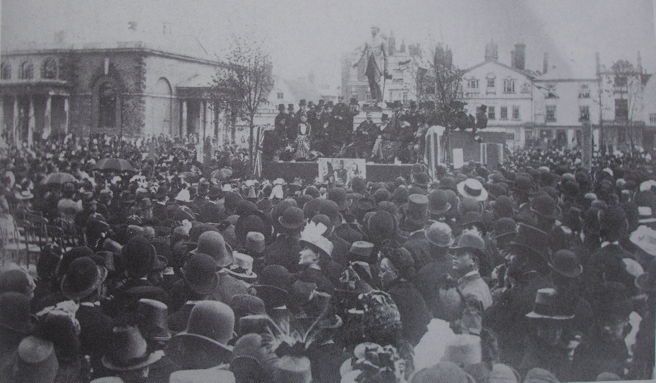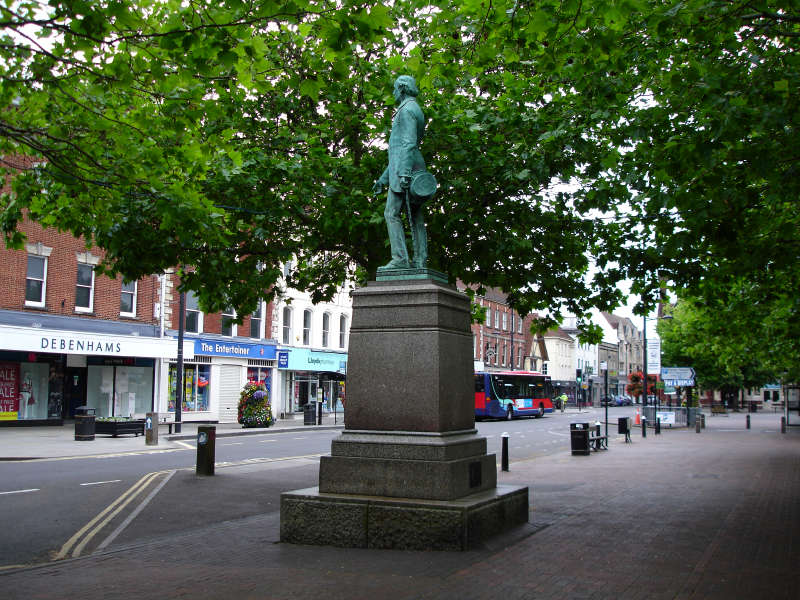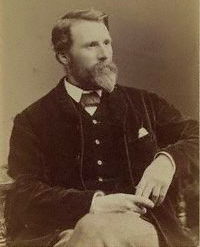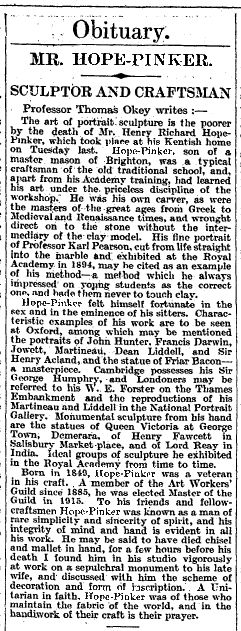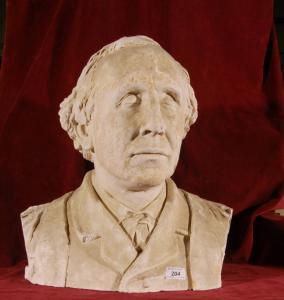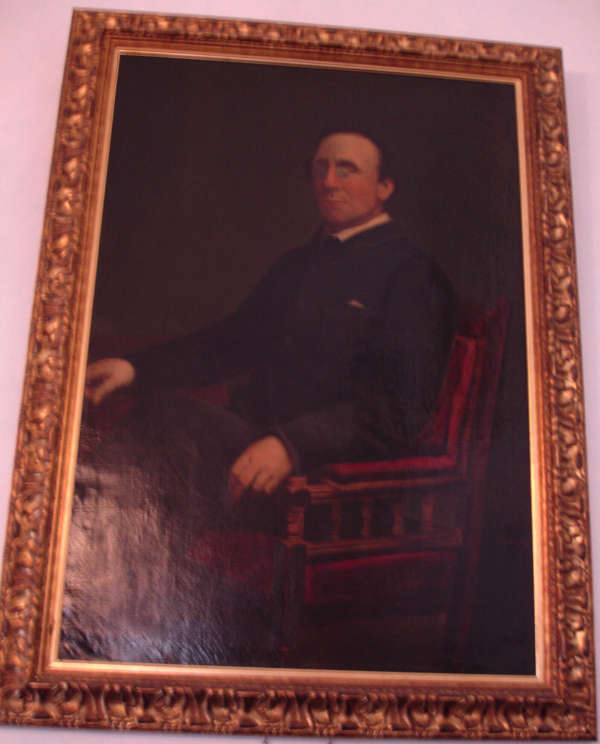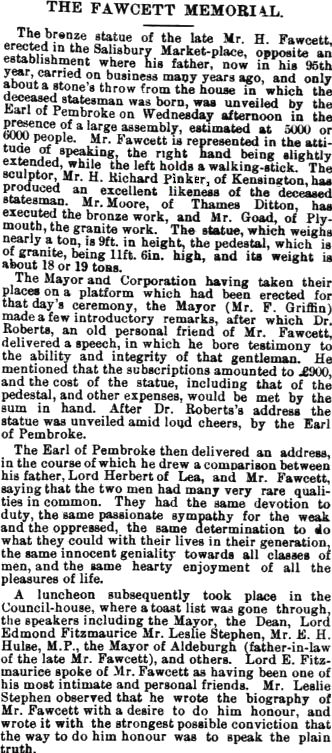
|
THE FAWCETT MEMORIAL
The bronze statue of the late Mr. H. Fawcett,
erected in the Salisbury Market-place, opposite an
establishment where his father, now in his 95th
year, carried on business many years ago, and only
about a stone's throw from the house in which the
deceased statesman was born, was unveiled by the
Earl of Pembroke on Wednesday afternoon in the
presence of a large assembly, estimated at 5000 or
6000 people. Mr Fawcett is represented in the atti-
tude of speaking, the right hand being slightly
extended, while the left holds a walking-stick. The
sculptor, Mr H. Richard Pinker, of Kensington, has
produced an excellent likeness of the deceased
statesman. Mr. Moore, of Thames Ditton, has
executed the bronze work. The statue, which weighs
nearly a ton, is 9ft. in height, the pedestal, which is
of granite, being 11ft. 6in. high, and its weight is
about 18 or 19 tons.
The Mayor and Corporation having taken their
places on a platform which had been erected for
that day's ceremony, the Mayor (Mr. F. Griffin)
made a few introductory remarks, after which Dr.
Roberts, an old personal friend of Mr. Fawcett,
delivered a speech, in which he bore testimony to
the ability and integrity of that gentleman. He
mentioned that the subscriptions amounted to £900,
and the cost of the statue, including that of the
pedestal, and other expenses, would be met by the
sum in hand. After Dr. Roberts's address the
statue was unveiled amid loud cheers, by the Earl
of Pembroke.
The Earl of Pembroke then delivered an address,
in the course of which he drew a comparison between
his father, Lord Herbert of Lea, and Mr. Fawcett,
saying that the two men had many very rare quali-
ties in common. They had the same devotion to
duty, the same passionate sympathy for the weak
and the oppressed, the same determination to do
what they could with their lives in their generation,
the same innocent geniality towards all classes of
men, and the same hearty enjoyment of all the
pleasures of life.
A luncheon subsequently took place in the
Council-house, where a toast list was gone through,
the speakers including the Mayor, the Dean, Lord
Edmond Fitzmaurice Mr. Leslie Stephen, Mr. E. H.
Hulse, M.P., the Mayor of Aldeburgh (father-in-law
of the late Mr. Fawcett), and others. Lord E. Fitz-
maurice spoke of Mr. Fawcett as having been one of
his most intimate and personal friends. Mr. Leslie
Stephen observed that he wrote the biography of
Mr. Fawcett with a desire to do him honour, and
wrote it with the strongest possible conviction that
the way to do him honour was to speak the plain
truth.
|
